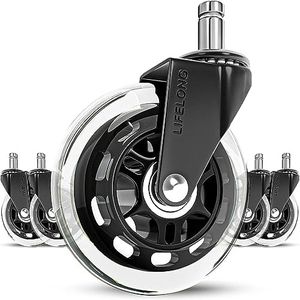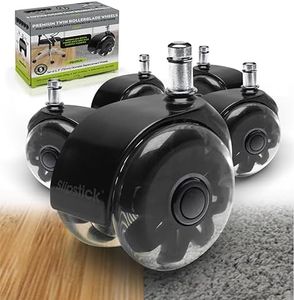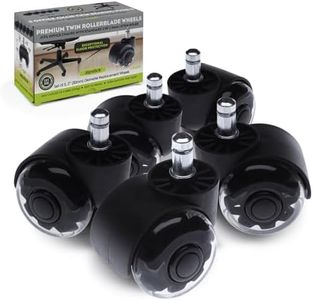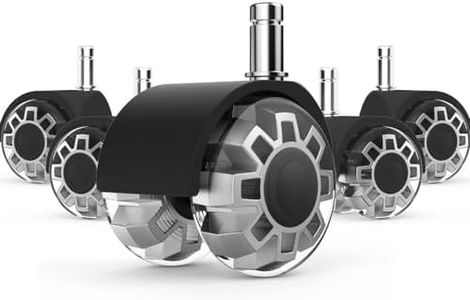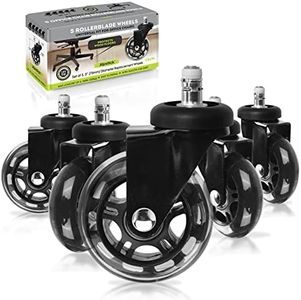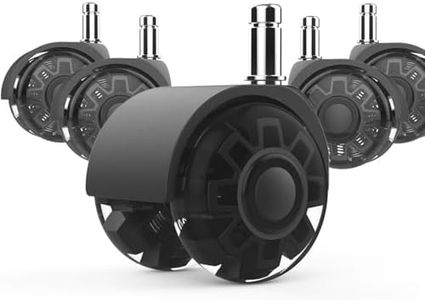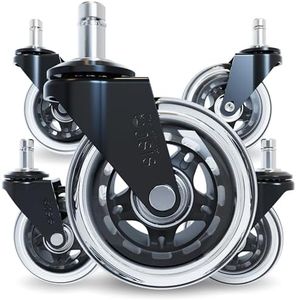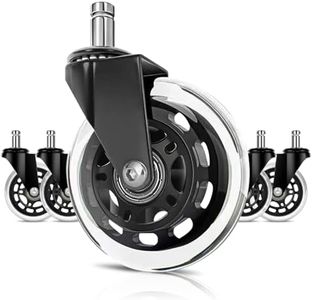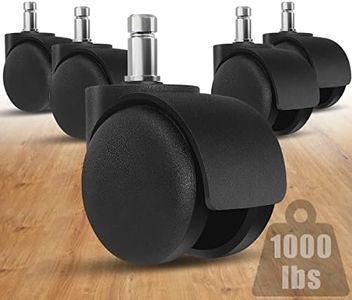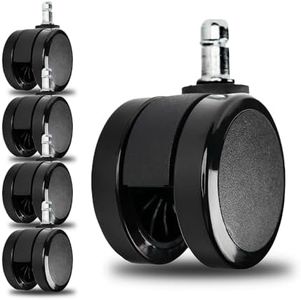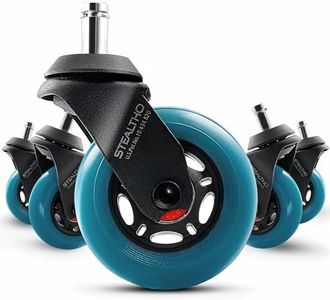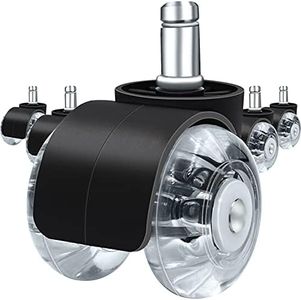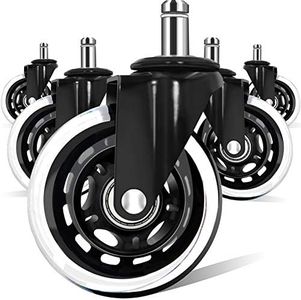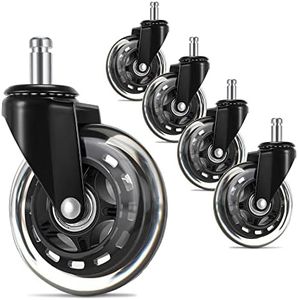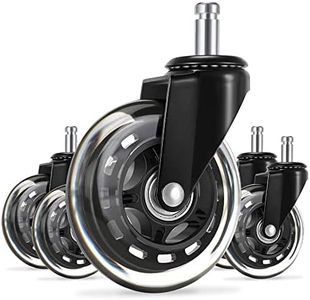We Use CookiesWe use cookies to enhance the security, performance,
functionality and for analytical and promotional activities. By continuing to browse this site you
are agreeing to our privacy policy
10 Best Rolling Chair Wheels
From leading brands and best sellers available on the web.Buying Guide for the Best Rolling Chair Wheels
Choosing the right rolling chair wheels can dramatically improve your comfort and convenience at your workspace. The perfect set of wheels not only ensures smooth movement but also protects your flooring and reduces noise. When picking chair wheels, you should focus on key characteristics that match your flooring type, mobility needs, and work environment. Understanding these features will help you find the best fit for your daily routine and maximize both the life of your chair and the surface it rolls on.Wheel MaterialThe material of the chair wheels is important because it determines how smoothly your chair rolls and how well it protects your flooring. Common materials include hard plastic, rubber, and polyurethane. Hard plastic wheels are best for carpet and rough surfaces, but they may scratch or damage hardwood and tile. Softer materials like rubber or polyurethane are quieter and safer for hard floors but may roll less smoothly on thick carpets. Always consider your floor type—choose softer wheels for hard surfaces, and harder wheels for carpet—for the best protection and performance.
Wheel SizeWheel size affects how easily your chair can move, especially over different surfaces. Smaller wheels (about 2 inches in diameter) are most common and work fine for low pile carpet or hard floors, but they can get stuck on thick carpet or uneven surfaces. Larger wheels (2.5 inches and above) provide better movement over carpets, thresholds, or debris, and also offer a bit more seat height. Pick a size based on how much mobility you need and what surfaces your chair will be rolling on most often.
Stem Type and SizeChair wheels are attached using a stem that fits into the base of the chair. There are different types, like grip ring, threaded, and grip neck, and they also come in various lengths and diameters. It's crucial to check your chair's stem hole for compatibility, as the wrong type or size simply won't fit. Measure your old stem or check your chair’s manual to identify the right match. By ensuring the proper stem, you avoid instability or the wheels falling out.
Weight CapacityDifferent wheels are designed to hold different amounts of weight. Standard office wheels often handle up to 250 pounds per set, but there are heavy-duty options for heavier users or chairs. Using wheels with too low of a capacity can lead to breakage and poor rolling. Consider both your weight and anything that’s regularly placed on your chair, then pick a capacity rating that safely supports that total.
Floor ProtectionSome wheels are specifically designed to prevent damage to floors by including features like soft treads or protective coatings. This is especially important if you have delicate hardwood, laminate, or tile floors that can scratch easily. Check for advertised floor-safe materials or add-on protective designs, especially if you won't be using a chair mat. If preserving your floor's appearance matters, prioritize this feature.
Noise LevelChair wheels can create noise when rolling, especially on hard surfaces. If you work in a quiet environment or want to avoid disturbing others, look for wheels labeled as quiet or silent. These typically use softer treads or smoother bearings to minimize rattling and squeaking. Prioritizing low-noise wheels is ideal for shared offices, libraries, or late-night use.
